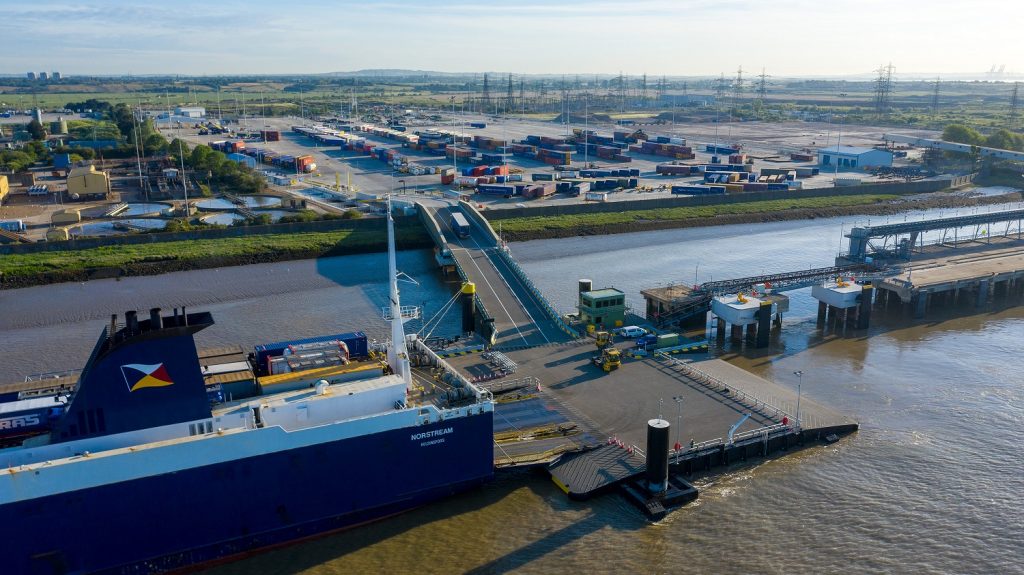Port of Tilbury Opens New Driver-Free Freight Ferry Terminal
27th May 2020

Tilbury2’s new unaccompanied* freight ferry terminal opened for business this week at a vital time for the UK’s freight industry. The 500,000-unit freight-only facility will inject state-of-the-art capacity into the country’s ports sector by utilising a truck driver-free operation* at a time when infection control is uppermost in everyone’s minds.
[*Unaccompanied freight transported into the UK without truck drivers]
After a year of construction, the country’s newest and largest unaccompanied freight roll on/roll off (ro-ro) terminal, located at the edge of London, will operate in exclusive partnership with P&O Ferries. The first ship to use the fully operational terminal was P&O’s chartered freight ferry the Norstream.
The bespoke terminal will import and export containers and trailers with vital supplies for the UK, including food, drink and medicines to and from continental Europe on P&O’s busy Tilbury-Zeebrugge freight route.
The new ro-ro terminal is part of a £250 million investment by owner, Forth Ports, which is creating a brand-new port, Tilbury2. The terminal is trusted trader Authorised Economic Operator (AEO) accredited and embraces the latest booking and border technology, such as number plate recognition, which ensures that the terminal is Brexit-ready to continue the smooth passage of goods, regardless of the eventual EU-UK settlement. The marine works for the new ro-ro terminal were completed in April and successful ship trials were carried out on 17 May.
Paul Dale, Asset & Site Director at the Port of Tilbury, said: “The switch to a river berth provides significant growth opportunities. P&O can bring in larger vessels, deliver faster vessel turnaround times and – most importantly – get containers and trailers onto an inland barge or the motorway network in under an hour. While this enhanced offering will support further growth through the Zeebrugge route and the possibility to expand into other northern European locations, it also provides a critical low carbon delivery alternative through our new rail connection.”

